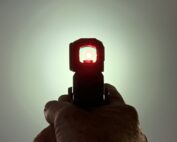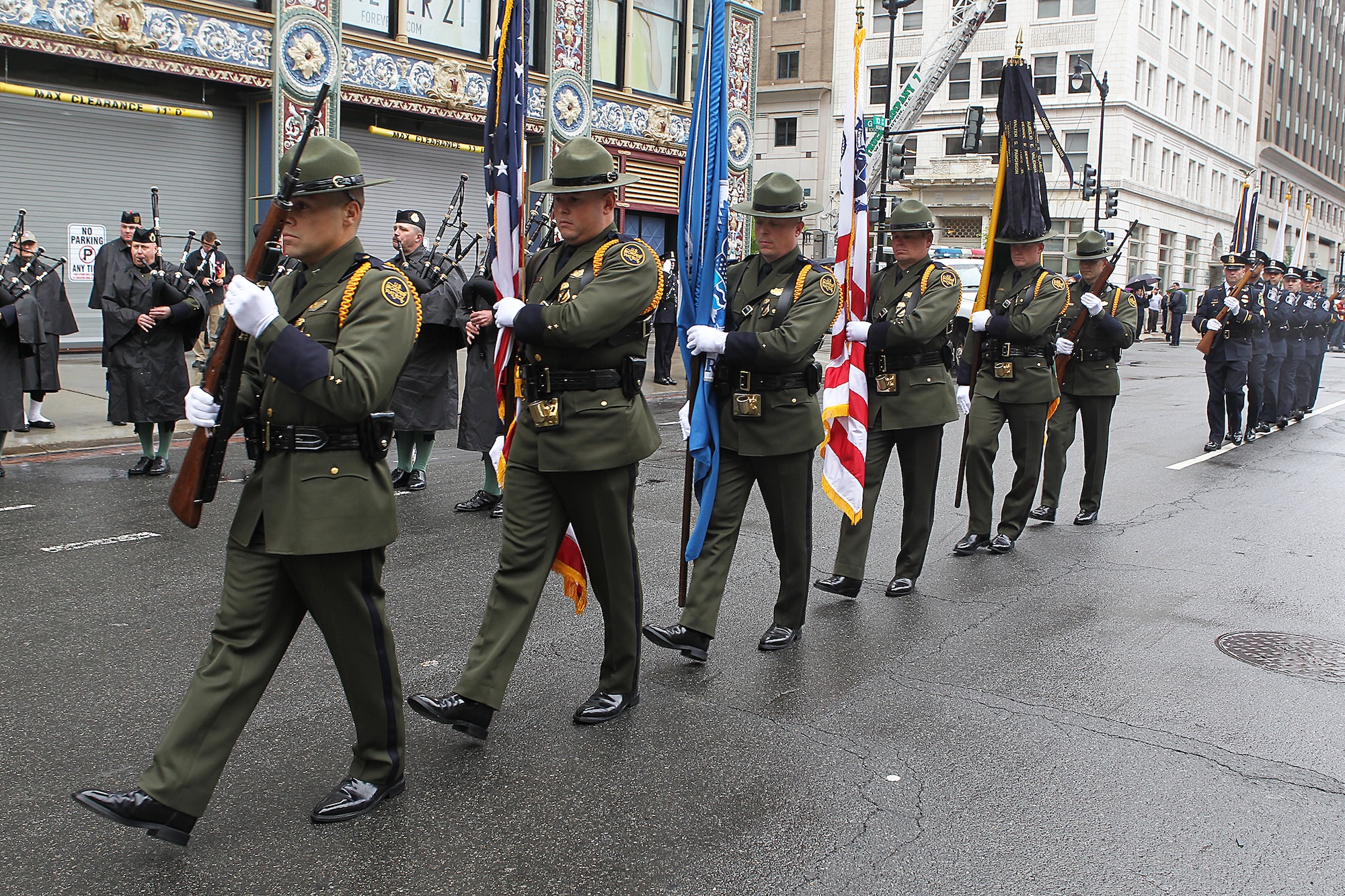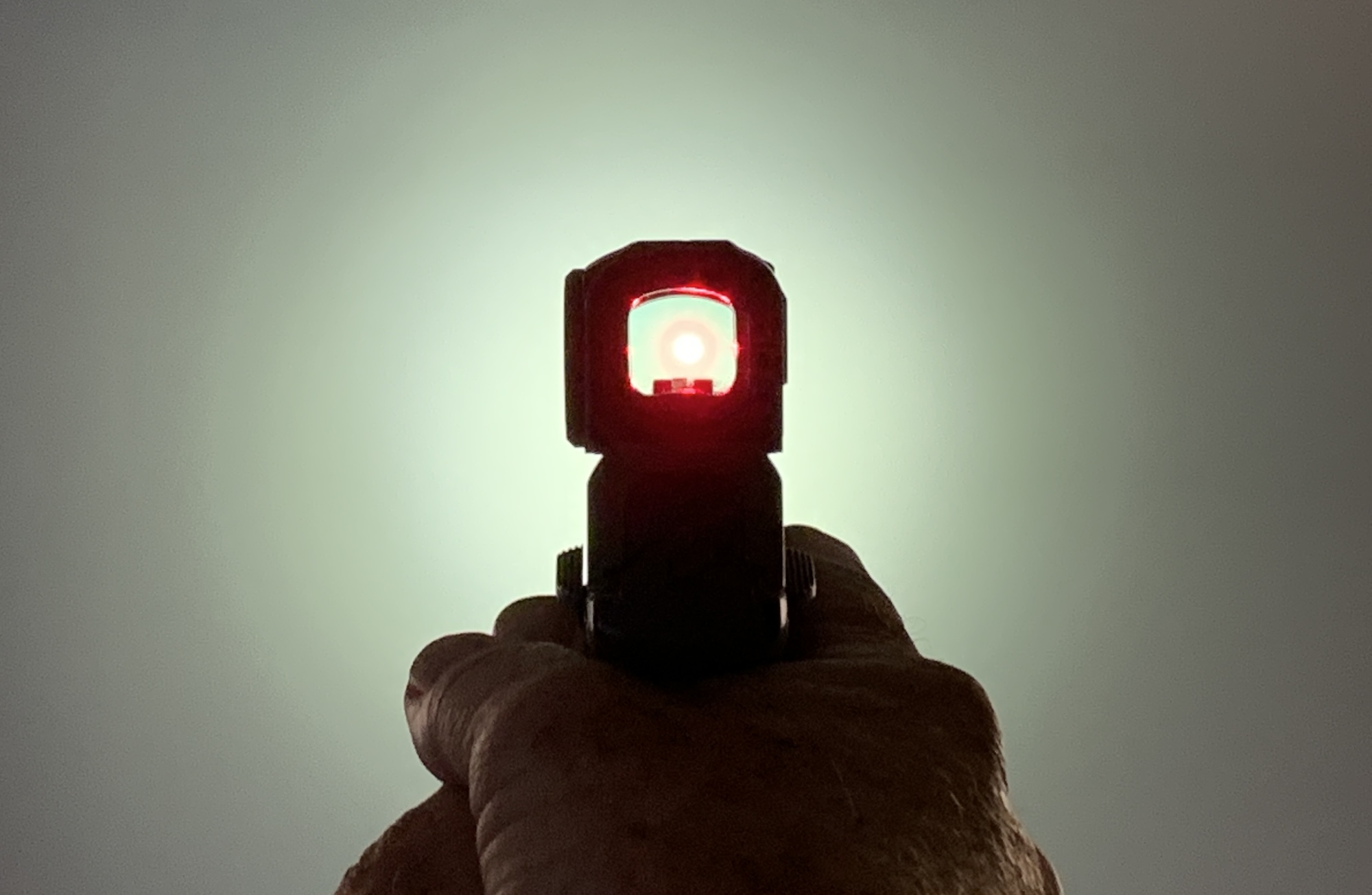
ARMOR-big
Keeping You In The Fight.
There are very few absolutes in police work. The seemingly mundane disturbance call of children playing in the street could turn into a fight for your life. On the other hand, a robbery in progress call at a local coffee shop where “the suspects have automatic weapons” could actually turn out to be a college film crew producing a low budget movie without notifying the police or getting a permit.
I firmly believe good gear is nice to have and should contribute to your effectiveness as a safe and competent police officer. And it’s body armor that will play a major role in determining if you’ll make it back to your point of origin after all hell has broken loose. But, in order for body armor to work, there has to be some action on our part allowing it to work for us.
Tactical outer carriers often end up looking sloppy. The pouches on this one look
worn and dirty, and an officer would be hard-pressed to grab the right piece of
gear considering how it’s all bunched together.
There Are Limitations
The National Institute of Justice (NIJ) sets the standard for body armor performance. Their most recent publication, Ballistic Resistance of Body Armor NIJ Standard-0101.06 was published in 2008 and was a major overhaul of the previous standard — a good thing for you and me. NIJ 0101.06 is a minimum standard, but you can rest assured knowing many of today’s body armor manufacturers bring you products that not only meet the minimum standard, but exceed it. Also be aware the standard is for ballistic resistance, not puncture or stab resistance — that’s a whole ’nuther riveting publication.
There are a variety of different levels of ballistic vests, and each level is required to stop the preceding level of threat in addition to the higher threat it’s rated for.
Should you wear a Level IIA, a Level II or a Level IIIA vest? What’s the difference? Here’s a brief breakdown of each level and what it will stop:
Level IIA — up to a 124-grain 9mm and 180-grain .40 S&W.
Level II — same as a Level IIA and up to a 158-grain .357 Magnum.
Level IIIA — everything in the previous two levels, and up to and including 125-grain .357 SIG and 240-grain .44 Magnum.
As you go up the protection matrix, the armor gets a bit heavier and for the most part, less malleable. Considering there’s about a 30 to 40 percent weight difference between a Level IIA and Level IIIA vest, your 10-hour shift in a Level IIIA vest will probably be a bit less comfortable than if you were wearing the lighter, “less resistant” Level IIA.
Yes, a IIIA vest protects you from bigger, badder bullets, but is it the right vest for everyone on your agency? Only your administrators can answer that question, but even though use of the IIIA is on the rise, the IIA is still the most common vest purchased by police agencies for their patrol officers.
Some agencies are switching to outer carriers like the one shown here.
It’s an appropriate option for SWAT, but isn’t necessarily the best
choice for uniform patrol.
It’s Voluntary
The armor you’re wearing should meet the current NIJ standard, but did you know participating in the standard is voluntary? Yup, there’s no requirement to have body armor tested, but why would an agency want to go with something that can’t be proven to meet a minimum standard? I don’t know of too many agencies that want that kind of liability hanging over their heads.
Almost 70 percent of the cost of a vest is in the bullet-resistant material (think Kevlar) and once a product line has passed NIJ testing, the manufacturer must stick with the particular weaver of the material for the life of the product line. If they change weavers or the weaver changes something within the process of making the material, it could have an impact on the performance of the vest.
For this reason, testing is ongoing and can be done randomly, particularly if NIJ suspects there may be an issue with the manufacturing or materials being used. Depending upon the maker’s ISO status, routine audits of their products can be anywhere from annually to every 3 years. And to think body armor companies are doing this voluntarily — it speaks volumes for how important your lives are to them.
Now this is a clean, professional look for an outer carrier.
Many companies are making them to blend perfectly
with your agency’s specific uniform color.
Beaker Geeks
With such names as Kevlar, Twaron, Dyneema (also known as Gold Flex and Spectra) and at one time, Zylon, the average cop knows very little about what any of these products are. Kevlar, made by Dupont, is what most of us think of when we look at our body armor. It is to body armor what Xerox is to copiers, or Kydex is to plastic holsters: an all-encompassing term used generically to describe “bulletproof” vests. Of course, vests are not bulletproof; they’re best described as ballistic impact-resistant vests. If they were truly bulletproof, you wouldn’t be able to move due to the weight.
The materials used under these brand names are all synthetic fibers and polymers created by the beaker geeks who are way smarter than you and I. These materials offer incredible tensile strengths at surprisingly low weights, and are why body armor is getting less cumbersome. Their uses are many outside of ballistic armor: tires, fiber optic cables, brake pads, sailcloth … the list is long and varied.
It’s the way the material is woven or processed and then layered that makes it work properly in its body armor form. Another critical component needed for your vest to function correctly is a proper fit. We all come in different shapes and sizes, and what fits me (a big guy) won’t work for a smaller-framed female. Whether you purchase a vest with your own money or are issued one by your agency, a fitting is a must. If you have a big change in your weight, you’ll need to be refitted. The sides where the front and back panels come together is the vest’s weakest point, particularly if it doesn’t fit you properly.
“Bulletproof vest” testing circa 1923. Modern testing is much more scientific … and safe.
Wear It
You have to wear the vest in order for it to work, this includes any time you’re in a marked police vehicle. The public has no clue whether you’re officially on-duty, all they know is you’re in a police car. This goes for Mr. Bad Guy, too — who thinks you’re out to get him. Think about it.
Your body armor is a lot like your gun belt: it’s generally not very comfortable, but neither of these things is designed to be comfortable. They’re designed to help keep you alive, which should be a very comforting thought. Most patrol officers still wear their body armor under their uniform shirt, which makes wearing a vest a bit more cumbersome. The latest trend is to wear the armor on the outside of the shirt.
Outer carriers made to look like your normal uniform shirt became fashionable around 2007, and companies like Blauer and Elbeco (to name a couple) have designed outer carriers for the agencies they supply uniforms to in order to match colors. Having your vest on the outside makes it a bit more comfortable, as it’s not trapped beneath your shirt, and it’s much easier to adjust when it gets askew during shift. There’s also the added benefit of being able to take it off easily while you’re stuck writing paper at the office. So long as the outer carriers look like your uniform, you’re sure to keep a professional appearance.
Don’t confuse outer carriers with load-bearing vests, or LBEs, although the current trend is moving toward them looking less like shirts and more like tactical vests. While the idea is to get some of the weight from the equipment on your gun belt up off your hips and low back and spread it out in the extra pockets of the outer carrier, it doesn’t make for a very professional look. Another huge downside to this more “tactical” look is the unfamiliarity of where you’ve now stowed your stuff — unless you’ve practiced with the new setup a lot — and we all know how much cops train with new kits, holsters, etc.
Technology continues to advance in the world of body armor. The scientists making the ballistic materials and the people in the manufacturing process of that vest you’re issued all have a stake in keeping you alive. With all their hard work, maybe the least you could do is actually wear your vest. Imagine that.
By John Thomas Grohn
>> Click Here << To See NIJ Acceptable Bullets Charts
Order Your Printed Copy Of American COP December 2013 Issue Today!


















